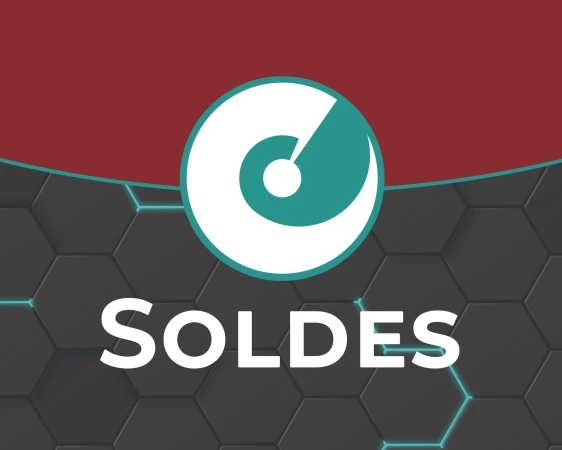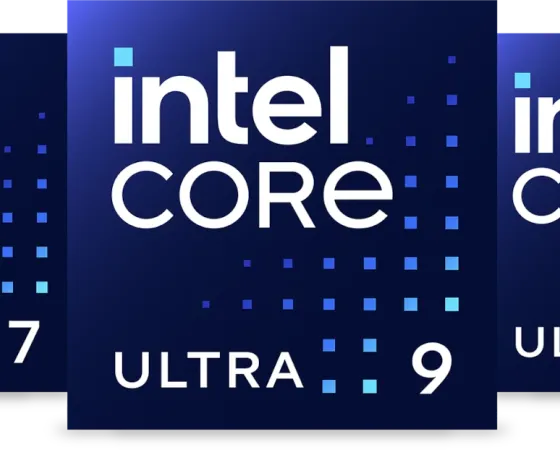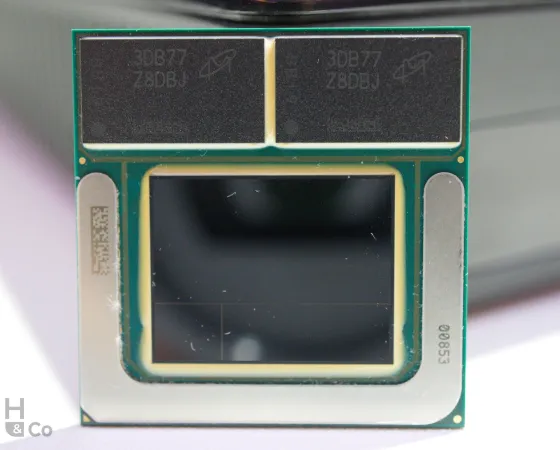Linux Foundation Announces Intent to Form LF Decentralized Trust
Read more of this story at Slashdot.
Read more of this story at Slashdot.
Read more of this story at Slashdot.
Read more of this story at Slashdot.
Read more of this story at Slashdot.
 Le processeur Intel Core i3-12100F est à son prix le plus bas vu en France : 77,01 € et avec la livraison offerte par Amazon. Alors oui, avec ses 4 cœurs uniquement (4 P-cores et 0 E-cores) il ne fait pas forcément rêver mais, si vous avez un tout petit budget et viser avant tout un usage gaming pou...
Le processeur Intel Core i3-12100F est à son prix le plus bas vu en France : 77,01 € et avec la livraison offerte par Amazon. Alors oui, avec ses 4 cœurs uniquement (4 P-cores et 0 E-cores) il ne fait pas forcément rêver mais, si vous avez un tout petit budget et viser avant tout un usage gaming pou...
 Que ce soit pour une dernière mise à jour de votre configuration AM4 actuelle, ou tout simplement parce que c'est ce qui colle le mieux à votre budget, voici une très belle offre sur l'un des processeurs les plus performant que cette plateforme d'AMD propose : le Ryzen 9 5900X. Il vous est possible...
Que ce soit pour une dernière mise à jour de votre configuration AM4 actuelle, ou tout simplement parce que c'est ce qui colle le mieux à votre budget, voici une très belle offre sur l'un des processeurs les plus performant que cette plateforme d'AMD propose : le Ryzen 9 5900X. Il vous est possible...
 En cette fin juin 2024, inutile de vous poser la question "tiens, est-ce qu'il y aurait de nouveaux pilotes pour ma carte graphique qui viennent de sortir ?". Que vous ayez un GPU AMD, NVIDIA ou Intel, la réponse est forcément "oui" puisque les trois firmes ont sorti une nouvelle fournée de leur par...
En cette fin juin 2024, inutile de vous poser la question "tiens, est-ce qu'il y aurait de nouveaux pilotes pour ma carte graphique qui viennent de sortir ?". Que vous ayez un GPU AMD, NVIDIA ou Intel, la réponse est forcément "oui" puisque les trois firmes ont sorti une nouvelle fournée de leur par...
 Que vous ayez un tout petit budget pour vous monter une nouvelle configuration aussi performante que possible, ou alors une alimentation vieillissante et/ou bruyante dans votre ordinateur desktop actuel, voici une offre à prix défiant toute concurrence sur du matériel de vraiment bonne qualité.Nous...
Que vous ayez un tout petit budget pour vous monter une nouvelle configuration aussi performante que possible, ou alors une alimentation vieillissante et/ou bruyante dans votre ordinateur desktop actuel, voici une offre à prix défiant toute concurrence sur du matériel de vraiment bonne qualité.Nous...
 La GeForce RTX 4060 Ti est un met de choix pour ceux qui veulent du 1080p sans concessions, en poussant les options de qualité graphique au maximum, jusqu'à activer le ray tracing. Elle offre en plus l'accès au DLSS 3(.5) de NVIDIA, qui pour l'heure surpasse les technologies concurrentes en matière...
La GeForce RTX 4060 Ti est un met de choix pour ceux qui veulent du 1080p sans concessions, en poussant les options de qualité graphique au maximum, jusqu'à activer le ray tracing. Elle offre en plus l'accès au DLSS 3(.5) de NVIDIA, qui pour l'heure surpasse les technologies concurrentes en matière...
 En ces temps de forte remontée des prix des SSD, on ne va pas cracher sur une belle promotion sur l'un des meilleurs modèles NVMe PCIe 4.0 du marché : le Samsung 980 Pro. Pour ce début des soldes d'été 2024, Darty casse un peu ses tarifs sur le modèle 2 To. Si on passe par Rakuten, on peut alors app...
En ces temps de forte remontée des prix des SSD, on ne va pas cracher sur une belle promotion sur l'un des meilleurs modèles NVMe PCIe 4.0 du marché : le Samsung 980 Pro. Pour ce début des soldes d'été 2024, Darty casse un peu ses tarifs sur le modèle 2 To. Si on passe par Rakuten, on peut alors app...
 C'est de loin le prix le plus bas vu à ce jour sur une AMD Radeon RX 7600 XT. Pour rappel, la RX 7600 XT est en quelque sorte une RX 7600 dopée aux hormones, avec des fréquences de fonctionnement plus élevées ainsi que 16 Go de GDDR6 au lieu de 8 Go sur la version de base. Comme Thibaut vous le mont...
C'est de loin le prix le plus bas vu à ce jour sur une AMD Radeon RX 7600 XT. Pour rappel, la RX 7600 XT est en quelque sorte une RX 7600 dopée aux hormones, avec des fréquences de fonctionnement plus élevées ainsi que 16 Go de GDDR6 au lieu de 8 Go sur la version de base. Comme Thibaut vous le mont...
 Prix intéressant pour ceux qui ont un tout petit budget mais aimeraient avoir un ordinateur portable avec carte graphique dédiée, leur permettant finalement de jouer à des jeux peu gourmands mieux qu'on pourrait parfois le croire.le modèle en question est le ERAZER Crawler E30, soldé par Cdiscount à...
Prix intéressant pour ceux qui ont un tout petit budget mais aimeraient avoir un ordinateur portable avec carte graphique dédiée, leur permettant finalement de jouer à des jeux peu gourmands mieux qu'on pourrait parfois le croire.le modèle en question est le ERAZER Crawler E30, soldé par Cdiscount à...
 Si le Samsung Odyssey G9 S49CG950EU vous tente, il n'a jamais été à un tarif aussi bas qu'aujourd'hui grâce à ce premier jour des soldes d'été. Pour rappel, nous avons là un écran 49 pouces doté d'une dalle VA DQHD 5120 x 1440p 240 Hz 1 ms, très incurvée puisque la courbure est ici en 1000R. Cet écr...
Si le Samsung Odyssey G9 S49CG950EU vous tente, il n'a jamais été à un tarif aussi bas qu'aujourd'hui grâce à ce premier jour des soldes d'été. Pour rappel, nous avons là un écran 49 pouces doté d'une dalle VA DQHD 5120 x 1440p 240 Hz 1 ms, très incurvée puisque la courbure est ici en 1000R. Cet écr...
 Vous cherchez actuellement un écran 27 pouces en 1440p et avec une bonne réactivité pour du jeu, mais vos finances sont très limitées ? Voici peut-être l'offre qu'il vous faut car il n'est vraiment pas courant de pouvoir croiser un tel écran à seulement 154,99 €.Direction Cdiscount qui met en solde...
Vous cherchez actuellement un écran 27 pouces en 1440p et avec une bonne réactivité pour du jeu, mais vos finances sont très limitées ? Voici peut-être l'offre qu'il vous faut car il n'est vraiment pas courant de pouvoir croiser un tel écran à seulement 154,99 €.Direction Cdiscount qui met en solde...
 Il y a un peu plus de quatre ans déjà, en mai 2020, Logitech lançait officiellement son clavier G915 TKL. Un modèle low profile, chose pas si courante que cela dans le milieu des claviers mécaniques, ce qui l'ai aidé à rencontrer un assez vif succès parmi les amateurs de ce type de touches. Un modèl...
Il y a un peu plus de quatre ans déjà, en mai 2020, Logitech lançait officiellement son clavier G915 TKL. Un modèle low profile, chose pas si courante que cela dans le milieu des claviers mécaniques, ce qui l'ai aidé à rencontrer un assez vif succès parmi les amateurs de ce type de touches. Un modèl...
 Hier, le 24 juin 2024, nous vous expliquions que les rumeurs au sujet d'un retard des futurs processeurs mobiles Lunar Lake seraient infondées, et qu'Intel prévoirait de les lancer à la fin du mois de septembre. On pourrait presque intituler cette actualité "à chaque jour sa nouvelle rumeur" puisqu'...
Hier, le 24 juin 2024, nous vous expliquions que les rumeurs au sujet d'un retard des futurs processeurs mobiles Lunar Lake seraient infondées, et qu'Intel prévoirait de les lancer à la fin du mois de septembre. On pourrait presque intituler cette actualité "à chaque jour sa nouvelle rumeur" puisqu'...
 Au mois d'août 2023, Valve prenait la décision de proposer des versions reconditionnées de ses consoles portables Steam Deck sur son site officiel. À l'époque, les tarifs proposés sur les deux modèles dont nous allons parler aujourd'hui étaient :Tarifs août 2023 :
Au mois d'août 2023, Valve prenait la décision de proposer des versions reconditionnées de ses consoles portables Steam Deck sur son site officiel. À l'époque, les tarifs proposés sur les deux modèles dont nous allons parler aujourd'hui étaient :Tarifs août 2023 :
• Steam Deck 64 Go : 419 € en...
 Le 14 juin 2024, nous vous expliquions que la marque de refroidisseurs, boîtiers et alimentations PC DeepCool était dans la tourmente alors que les États-Unis considèrent qu'elle s'est rendue coupable d'assistance envers la Russie dans son effort de guerre envers l'Ukraine. Nous étions alors deux jo...
Le 14 juin 2024, nous vous expliquions que la marque de refroidisseurs, boîtiers et alimentations PC DeepCool était dans la tourmente alors que les États-Unis considèrent qu'elle s'est rendue coupable d'assistance envers la Russie dans son effort de guerre envers l'Ukraine. Nous étions alors deux jo...
 Le 20 juin 2024, le site DigiTimes affirmait qu'Intel allait finalement avoir du retard dans le déploiement de ses nouveaux processeurs mobiles Lunar Lake et que les expéditions aux partenaires ne se feraient finalement qu'au mois de septembre au lieu de ce mois de juin. Un retard qui entraînerait,...
Le 20 juin 2024, le site DigiTimes affirmait qu'Intel allait finalement avoir du retard dans le déploiement de ses nouveaux processeurs mobiles Lunar Lake et que les expéditions aux partenaires ne se feraient finalement qu'au mois de septembre au lieu de ce mois de juin. Un retard qui entraînerait,...